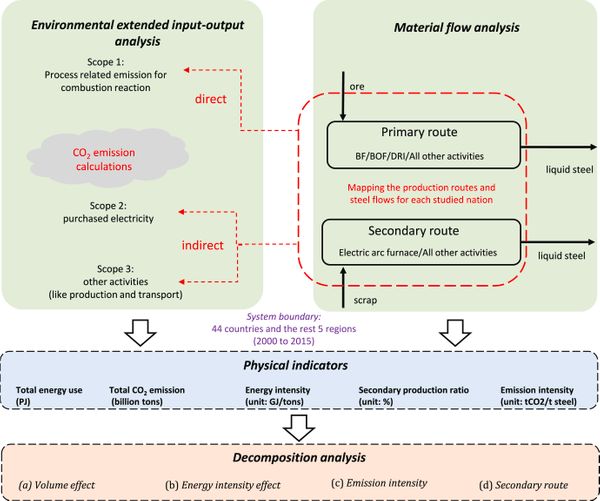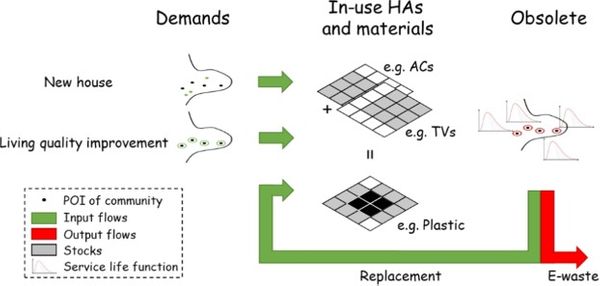by Ai, N.*; Zheng, J.; and Chen, W.-Q.
Resources, Conservation and Recycling. 2019, 145: 208-219.
https://linkinghub.elsevier.com/retrieve/pii/S0921344919300230
Abstract
While electric vehicles (EVs) have been promoted for green consumption, improper or inadequate management of end-of-life (EOL) EV batteries, as the current practice, compromises the benefits of EV adoption. This study aims to contribute to both theoretical research of material flow analysis and timely management of EOL EV batteries at various geographic scales (i.e., national, state, and county).
Theoretically, this study tests two battery lifespan scenarios (i.e., constantly at 3–8 years and dynamically increasing over time), three discard probability functions (i.e., uniform, truncated normal, and Weibull), and three EV sale projections (i.e., low, moderate, and high). Results show that the short-term EOL volume (by 2025) can be particularly sensitive to the lifespan parameter. The long-term estimates involve most uncertainties related to the EV market penetration. Various discard probability functions generally derive similar results.
In practical terms, the results suggest that necessary infrastructure for proper EOL EV battery management is needed sooner than the public may have perceived. This study urges for regional planning that incorporates both temporal and spatial considerations. To illustrate an example of regional solutions, this study adopts empirical data in California to simulate and spatially match EOL EV battery clusters and the renewable energy facilities that can potentially reuse EV batteries as energy storage. Meanwhile, the spatial mis-match between the supply and demand, as can be the case in other regions, calls for region-wide coordination in terms of both infrastructure development and transportation planning.
Keywords
Electric vehicles (EV)BatteriesEnd-of-life managementMaterial flow analysisProduct flow analysisWaste management







